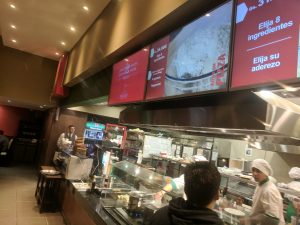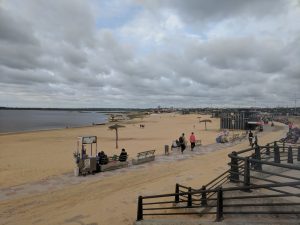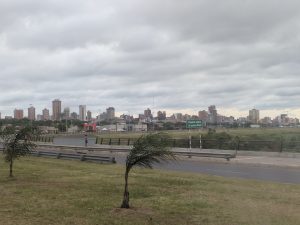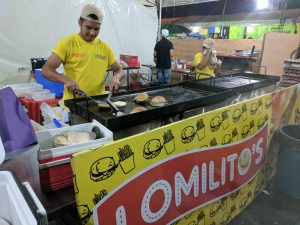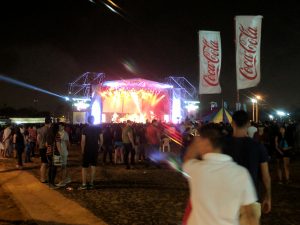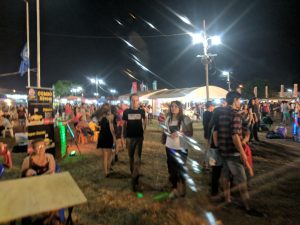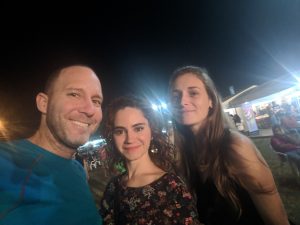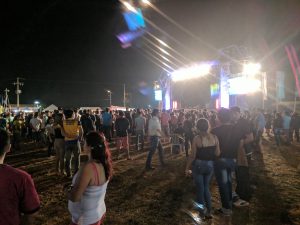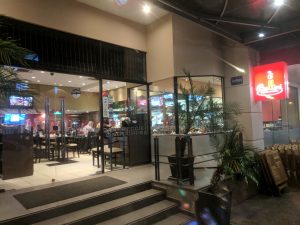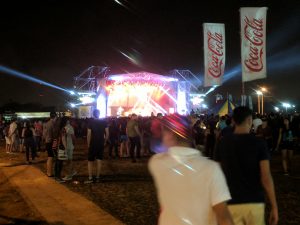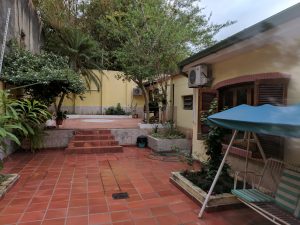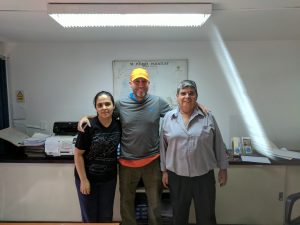Mestizo Paraguay: Two Cities
Mesitzo Paraguay: Two Cities
Asunción, the capital city of Paraguay, is actually multiple cities in one, with Old Town and New Town offering completely different experiences, and the suburbs beyond something completely different again.
Most Meaningful: Discover the local experience by meeting locals and immersing yourself in the local, rather than tourist, culture.
Travel Tips: The city has many different sides, so don’t stay in one place. Make local friends and let them introduce you to local treasures and unique cultural practices.
Old Town
The streets of the old town are lined with crumbling old Spanish buildings, reflecting its Spanish foundation in the early 16th century. But behind the doors of these buildings, you will find shops selling indigenous style art, and restaurants serving fusion indigenous and European meals.
Popular folk art in Paraguay includes ceramics, weaving, leatherwork, and they are particularly famous for featherwork and basket weaving. While wandering the shops and markets of Old Town are enough to appreciate local artistic traditions, if you are more interested in learning about the art than buying, or want to learn before you buy, consider visiting the Andrés Barbero Ethnographic Museum, the Museum of Indigenous Art and the Museo del Barro.
Old Town is also the place to try the local cuisine, which is a mix of indigenous and Spanish, and also has a taste of other influences including Lebanese, Portuguese and Italian (is there a country in the world where you can’t buy some interpretation of pizza?). After all this mixing, the local cuisine is both healthy and spice, and heavy in all things manioc.
My favorite local dishes sampled on my trip were Mbeju, a starchy cake made with manioc flour and cheese, and Pastel Madi’o, a manioc pastry stuffed with minced meat. Payagia Mascada is the Guarani word for chewing gum for dogs, but is actually a manioc tortilla filled with beef. Chipa is a pungent local cheese, while Sopa is a delicious cheese cornbread. Any dish cooked with local white-fleshed river fish, known as Surubi, is also a must.
New Town
In New Town you will see the new side of the city, complete with glass buildings and trendy shopping malls. This side of the city seems appropriate considering that 65 percent of the population of Asunción is under 30.
What all the people of Asunción, young and old, seem to love, and have in common with other South America, is a love of Yerba Mate Tea. As you walk the streets you will see people sipping something through a metal straw out of a small, round wooden cup, often intricately decorated. This is the local Mate tea, which can be drunk hot or cold, but does need to be brewed with ice water The straw is specially designed to filter out the Mate leaves as you drink.
I stayed in a loft just off the Paseo Carmelitas in the pedestrian area of New Town. This area is busy and bustling with loads of bars, restaurants and shops. On many evenings there were also a lot of outdoor festivals and other activities, and there seemed to be a real enthusiasm to bring business and culture to the area. Like in many South American cities, the nightlife starts late, much later than we might expect in the United States.
The best nightlife is in New Town centres around Avenida Mariscal López, which is always both energetic and friendly. It was while here that I met Stephen, a North Carolinian who moved to Paraguay for investment opportunities and to start new businesses. He shared with me his story, telling me that if you are willing to invest in the country, it is possible to obtain citizenship for only a few thousand dollars US. This also grants access to a number of the other Mercosur countries in South America including Brazil, Argentina, Uruguay, Bolivia and others.
Suburban Asunción
If you are looking to go a bit further out from the city centre to more residential areas, consider spending a few hours running around Nu Guasu Park. This is a relatively long track that takes you around a beautiful lake. The park is also full of cafes and restaurants, which are great places to pass some time people watching. Many people gather by the lake to dance, and it is enjoyable to either watch, or participate if you think you have rhythm.
While in the area I happened to meet an English speaking local called Marcelo. Like me, he works in technology, so we hit it off instantly as he told me about the local scene, and quizzed me on how to connect with companies in Silicon Valley. He took me to some of the neighbourhoods around the park where I was able to see some of the poverty for which Paraguay is also famous, which contrasts with the relative wealth of the city centre.
Study Spanish
Knowing that Asunción was not full of tourist attractions and ex-pat pockets, I chose to use part of my time in the city to scrub up on my Spanish by studying at the IDIPAR language school. I stayed on site at their facility in the heart of Old Town, and shared meals with a local family that spoke no English, encouraging me to make rapid progress with my Spanish. Unlike most metropolitan cities around the world, including in South America, people who spoke English in Asunción were few and far between. So go in ready to use your high school Spanish. Even if you don’t speak well, you will find that the people are friendly and keen to communicate, so you will get by with basic Spanish, good will and sign language.
Going Local
Whenever I travel, I want to experience a place as much as I can like a local, and not just visit the safe and sparkly tourist sites. This always requires meeting local people that can share their experiences and knowledge. For me, in Paraguay, this was Maria. We actually connected via Tinder, which can be a great tool for travelers trying to meet people and doesn’t need to be all about a hook-up. We connected online and then met at the Altelier Rooftop Hotel.
Naturally shy, I took a while to open up to her, and feared that she thought me incredibly dull for the first few hours. Eventually, we got to know each other and she shared her story with me, and I told her about my life as a traveling teacher.
As we continued to meet, she showed me parts of the city that I would never have discovered on my own. She comes from a family of architects who built a gorgeous glass-windowed house in a forested area on the outskirts of the city. Up on the second and third floor of their house, you feel a bit like you are living among the branches of trees.
Maria also took me to the Costa Negra River in the north of the city, which leads to an barren land that places Asunción in its isolated context. She also took me to a music festival in the nearby area of Luque to see a local rising star musician Miki Napat. Music, dancing and good times, and what I actually remember most is eating Lomalitos, a thinly cut slice of beef, egg and tomato in a hamburger bun. Just perfect.
Having explored Asunción as a local, I think that it should be added to any South American travel itinerary for the very reason that it does not have the big international attractions of the other South American countries. It offers an authentic and unique mestizo experience.
